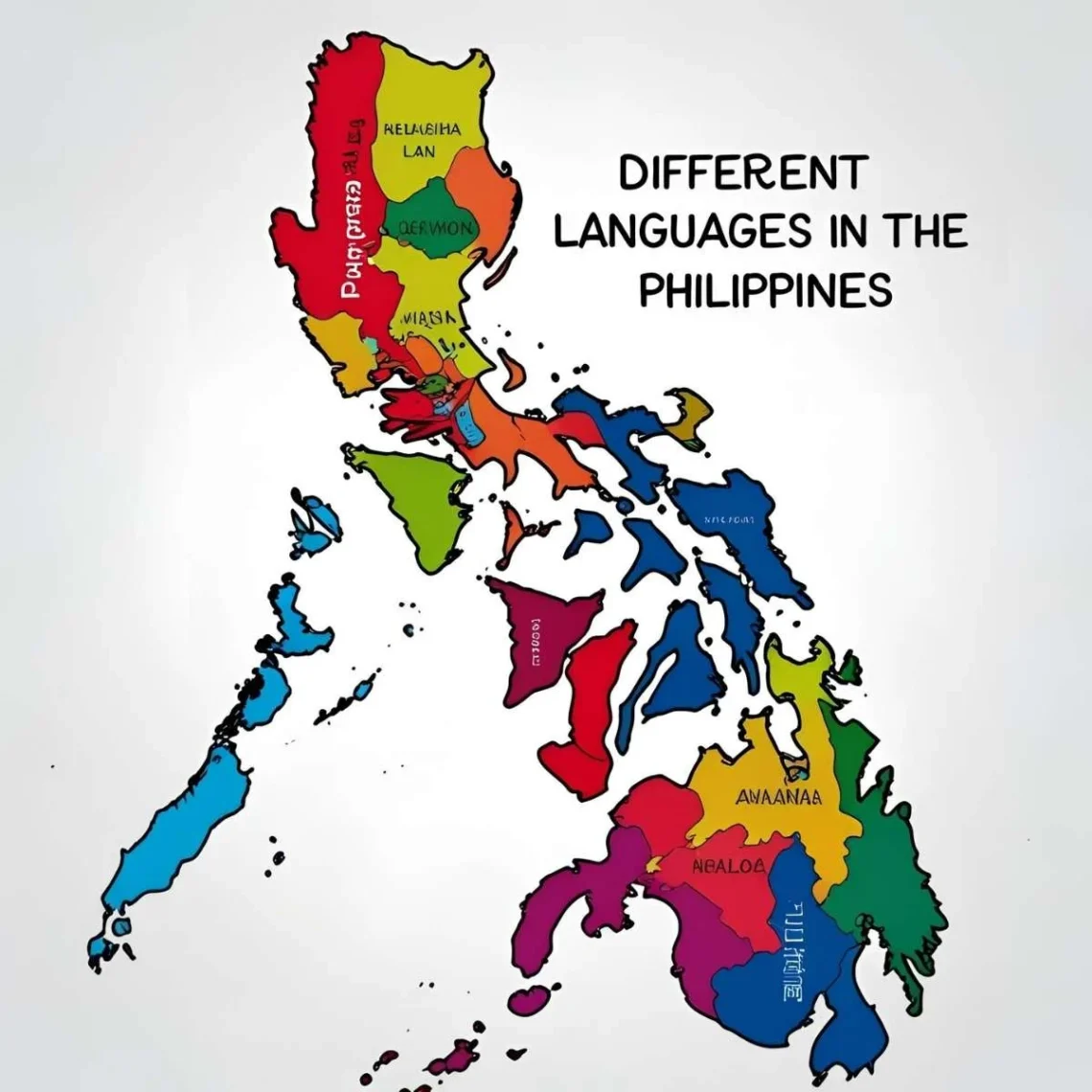Picture a vibrant festival in Cebu, where a vendor calls out in Cebuano, a child laughs in Tagalog, and elders share stories in Ilocano under a canopy of stars. The Philippines, an archipelago of over 7,000 islands, hums with a chorus of languages, each carrying the soul of its people.
From bustling Manila to remote Mindanao villages, these languages weave a rich tapestry of identity, history, and connection.
Let’s embark on a journey to explore the diverse languages of the Philippines and discover how they reflect the nation’s cultural heartbeat.
Reference Table: Languages in the Philippines
| Language | Region/Province | Cultural/Linguistic Insight |
|---|---|---|
| Tagalog | Metro Manila, Central Luzon | The basis of Filipino, the national language, widely used in media. |
| Cebuano | Cebu, Bohol, parts of Mindanao | Also called Bisaya, it’s vibrant and melodic, used in songs and poetry. |
| Ilocano | Northern Luzon (Ilocos, Cagayan) | Known for its poetic depth, often used in folk literature. |
| Hiligaynon | Western Visayas (Iloilo, Negros) | Also called Ilonggo, it’s warm and expressive, used in daily life. |
| Waray | Eastern Visayas (Leyte, Samar) | Reflects resilience, often heard in heartfelt ballads. |
| Kapampangan | Pampanga, Tarlac | Known for culinary terms, it’s rich in cultural pride. |
| Pangasinan | Pangasinan | Features unique vowel sounds, tied to local folklore. |
| Bikol | Bicol Region | Known for its soft tones, used in religious and poetic expressions. |
| Tausug | Sulu, Tawi-Tawi | A language of seafaring people, rich in maritime terms. |
| Maguindanao | Maguindanao, Cotabato | Reflects Islamic heritage, used in oral traditions. |
| Maranao | Lanao provinces | Poetic and rhythmic, tied to epic storytelling like the Darangen. |
| Chavacano | Zamboanga, Cavite | A Spanish-based creole, blending native and colonial influences. |
| Ivatan | Batanes | Unique for its Austronesian roots, tied to rugged island life. |
| Aklanon | Aklan | Known for its distinct “e” sound, used in local festivals. |
| Kinaray-a | Antique, Iloilo | Earthy and direct, often used in rural storytelling. |
Luzon Languages: Voices of the North and Center
Luzon, the largest island, hosts a variety of languages reflecting its diverse landscapes. For instance, Tagalog, spoken in Metro Manila and Central Luzon, forms the backbone of Filipino, the national language, and dominates media and education. Meanwhile, Ilocano, used in Northern Luzon, carries poetic depth, with proverbs and folk tales shared in Ilocos homes. Additionally, Kapampangan in Pampanga is rich with culinary terms, reflecting the region’s food culture, while Pangasinan features unique vowel sounds tied to local myths. In contrast, Bikol, spoken in the Bicol Region, is known for its soft tones, often heard in religious hymns. These languages showcase Luzon’s blend of urban sophistication and rural tradition, uniting communities through shared stories.
Visayan Languages: Melodies of the Central Islands
The Visayas, a cluster of islands, hum with expressive languages. For example, Cebuano, also called Bisaya, is spoken in Cebu and parts of Mindanao, known for its melodic quality in songs and poetry. In Hiligaynon (Ilonggo), used in Iloilo and Negros, conversations are warm and lively, reflecting the region’s hospitality. Similarly, Waray, spoken in Leyte and Samar, carries a tone of resilience, often heard in heartfelt ballads sung during festivals. Aklanon in Aklan stands out with its distinct “e” sound, while Kinaray-a in Antique is earthy, used in rural tales. These languages, spoken across vibrant Visayan communities, highlight the region’s love for music, storytelling, and connection.
Mindanao Languages: Echoes of Diversity
Mindanao, a cultural melting pot, hosts languages shaped by indigenous and Islamic influences. For instance, Tausug, spoken in Sulu and Tawi-Tawi, reflects the seafaring culture of its people, rich with maritime terms. In Maguindanao, used in Maguindanao and Cotabato, the language carries Islamic heritage, heard in oral traditions. Similarly, Maranao in Lanao provinces is poetic, tied to epics like the Darangen, a UNESCO-recognized masterpiece. Chavacano, a Spanish-based creole in Zamboanga, blends native and colonial roots, used in bustling markets. These languages, spoken across Mindanao’s diverse landscapes, reflect a fusion of tradition, faith, and resilience.
Indigenous & Island Languages: Roots of Resilience
The Philippines’ indigenous and smaller island languages preserve ancient traditions. For example, Ivatan, spoken in Batanes, reflects the rugged life of its islanders, with terms tied to fishing and storms. In Ifugao, used in the Cordillera, the language carries rice terrace traditions, spoken during rituals. Similarly, Kankanaey, also in the Cordillera, is used in storytelling about mountain spirits. In Palawan, Cuyonon reflects coastal life, with words for fishing and coral reefs. These languages, spoken in remote communities, emphasize harmony with nature and ancestral pride, preserving the Philippines’ pre-colonial heritage.
Cultural Insights: The Evolution of Philippine Languages
Philippine languages have evolved through centuries of trade, colonization, and cultural exchange. For instance, Tagalog absorbed Spanish and English words during colonial eras, shaping modern Filipino. Chavacano, a creole, emerged from Spanish contact in the 17th century, blending Austronesian and European elements. Moreover, languages like Maranao and Tausug carry Islamic influences from pre-colonial trade with Borneo and Malaysia. Indigenous languages like Ivatan retain Austronesian roots, dating back thousands of years. These languages are more than communication tools—they’re vessels of history, carrying stories of resilience, faith, and identity across the archipelago.
Proverbs and Sayings: Wisdom in Words
- Tagalog: “Ang wika ay kaluluwa ng bayan.” (Language is the soul of the nation.) – Highlights language as cultural identity.
- Cebuano: “Ang pulong sama sa hangin, dali ra molupad.” (Words are like the wind, they fly quickly.) – Emphasizes the power of speech.
- Ilocano: “Ti pagsasao ket adda biag na.” (Language has its own life.) – Reflects the living nature of words.
- Hiligaynon: “Ang hambal nga maayo, daw bulak nga nagapamulak.” (Good words are like blooming flowers.) – Ties language to beauty.
- Tausug: “Katawan sin bangsa, sin wika.” (The knowledge of a people is in their language.) – Links language to cultural wisdom.
FAQs
Why are there so many languages in the Philippines?
The archipelago’s 7,000+ islands fostered isolated communities, each developing distinct languages over centuries.
What’s the oldest Philippine language?
Austronesian languages like Ivatan trace back over 4,000 years, predating colonial influences.
How do cultures shape these languages?
Coastal languages (e.g., Tausug) focus on maritime terms, while mountain languages (e.g., Ifugao) reflect nature and rituals.
Conclusion
From Tagalog’s urban rhythm to Ivatan’s windswept tones, the languages of the Philippines weave a vibrant cultural mosaic. Each tongue, whether Cebuano’s melodic cadence or Maranao’s epic poetry, reflects the nation’s heart and history. Consequently, these languages unite Filipinos across islands, celebrating shared roots and diverse stories. What language do you hear in your community, and what tales does it tell? Share your thoughts below—we’re eager to hear your voice!





